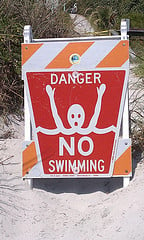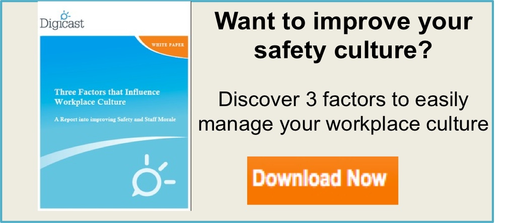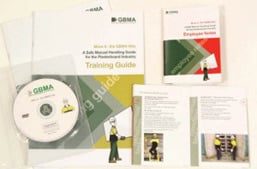5 Ways to Encourage Safety Ownership
 Companies that are best in class when it comes to safety, all have one thing in common. And that is each employee and contractor takes ownership of their own safety. It's part of their workplace culture.
Companies that are best in class when it comes to safety, all have one thing in common. And that is each employee and contractor takes ownership of their own safety. It's part of their workplace culture.
If you were to ask employees who work at companies that are average or poor at safety, "Who is reponsible for safety?", they would say "The Safety Manager".
But at high performing companies, staff would answer "I am".
By taking ownership of safety, staff are more likely to speak up when they see safety issues, correctly report incidents, have a positive attitude towards safety and take new safety initiatives seriously.
For companies who want to improve safety, there needs to be a balance between the company doing the right things for staff when it comes to safety (ie: providing the right safety equipment, training, having clear procedures etc) and staff being fully accountable for their own safety. It's a two way process.
Where this gets tricky, is that a lot of people think that they will not get injured at work. Called "optimism bias", workers think other people in their workplace will get hurt and not them. The danger to this is that they tune out safety training and messages, as well as being responsible for their own safety.
Humans also tend to not accept responsibility for themselves, prefering to blame others when things go wrong.
In order to get around the human tendency of "it won't happen to me" or "it's not my responsibility" companies need to focus on communicating:
1. Group identity - the importance of working as a company team and the need to look out for each other. Staff work towards one safety goal and see one another as family. All talks use inclusive language such as "We're XYZers the best at what we do. We can reach our safety goal of 10 safety reports a month!".
2. High candour - Studies have found that high performing companies encourage staff, at all levels, to openly discussing issues and providing feedback to one another on performance. While low candour workplaces are highly politicised and people are too afraid to speak up. When people trust that they can freely talks about safety risks, then you know that they are being responsible to themselves and others and that you have an open workplace culture.
3. Positive safety attitudes - Negative workplace attitudes to safety can be contagious. Once negative safety attitudes become viral, they're pretty hard to cure. It's important that staff are always told that safety is achievable and that those who are negative about safety are quickly corrected. Companies that have a belief that certain industries have more fatalities, tend to have more fatalities. Likewise, companies who believe that safety is achievable, do well with safety. How safety gets communicated impacts attitudes. You can learn some great techniques from the book Transform your Safety Communication, get a free chapter here).
4. Friendly Supervisors - A good supervisor fosters positive safety attitudes and encourages sharing important safety-related information. Various research studies have shown that positive communication relations between supervisors and employees improves safety performance. Having great supervisors that expect people to take ownership of their safety (while providing them support, training and resources) is empowering. Get support from the Supervisor Leadership Skills for a Safe Workplace. It is a highly rated and affordable online course.
5. Tell Safety Stories - When it comes to changing people's mindsets that "it won't happen to me", the most effective way is to get people who have been injured, to talk about what happened. After all, stories provide an emotional connection to information and can show the effect of when safety is not taken seriously.
What can you do to start getting staff to be more accountable for safety?
Photo Credit: Flickr, JaxStrong

